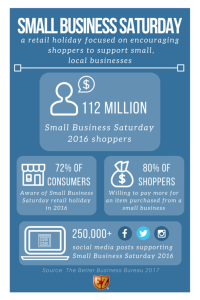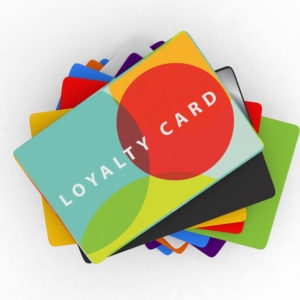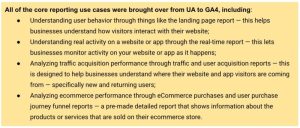
Some brands treat their referral program like a Wild West bounty—as if they can just put up a sign reading, “Wanted: New Customers,” offer a reward, and let someone else bring in the new business.
But referral isn’t about sitting back and letting someone else handle customer acquisition. Yes, your advocates are the ones reaching out to new customers. But to maximize their potential, you need to understand what drives your advocates to share referrals, where they want to do it, and who they’re sending them to. After all, a referral program is part of your advocate program. The goal is to create advocates with whom you can have a deeper connection.
The approach you need to take then is to have a profile that details the interactions of your advocates so that you can understand who they are, how they behave, who they know, and how to connect with them.
User profiles are nothing new. Everyone from retailers to app makers collects data on what their customers buy and how they interact with their product, then consolidates it somewhere like a CRM.
That’s great for understanding individual customers, but advocacy is about relationships. Each referral, for example, involves at least two people. You need a way to predict, identify, and measure these person-to-person interactions—every referral share, every conversion, and the parties involved—that often take place outside of your site or app.
Here are five crucial referral tactics you won’t be able to tap into without peer-to-peer user profile technology.
1. Push Advocates Toward the Right Social Channels
In his time driving customer acquisition for hundreds of mobile apps, Kamo Asatryan has learned that referral marketing is one of the most powerful growth strategies around. But he estimates that for any referral program, 80% of invites will be shared on just two channels. That leaves room for three total—four tops—to focus on and get the best possible results.
Email and SMS are a given for most referral programs, but things get a bit messier when it comes to social media. Sharing a referral on social media is a great way for an advocate to reach several of their friends at once. But, while most of your customers have profiles on multiple platforms, you need to push them to share referrals on the ones where they’re most active and have the biggest following.
You could friend all your customers to figure that out, but user profiles save you the trouble. As soon as someone enters an email address on your site to make an order or share a referral, Extole’s platform pulls in associated social media data and adds it to their profile. You can look across your entire customer base and see where potential advocates are the most active and have the widest reach, then push them to share referrals on those channels.
2. Provide More Personalized Referral Sharing
Referral marketing is so powerful because it taps into something customers trust more than any kind of advertising: recommendations from friends and family. But you’ll compromise that trust if your referral share messages look like generic email marketing. User profiles collect the data that lets you put each advocate’s personal stamp on all of their referral messages.

Something as simple as putting a picture of the advocate’s face on their referral share messages boosts conversion rates 3%. But there’s no need for you to scour the web for those pictures. User profiles automatically pull customers’ profile pictures from their social media data and insert them into their referral messages.
Another tried-and-true personalization tactic is to incorporate the advocate’s name into the referral code. While lots of referral programs just generate a random code every time someone shares, user profiles generate the same personalized code every time an advocate refers.
These basic personalization tactics are table stakes for a strong referral program. But you need sophisticated user profile technology to make sure they happen smoothly every time someone refers.
3. Make Sure Advocates Get the Reward They Deserve
Picture this: An advocate notices her friend admiring her new jeans, sends her a referral code to the store she bought them, and eagerly awaits her friend to buy something so she can collect her reward. But a week later, she’s received nothing. The advocate calls her friend, only to learn she already has bought something. She just forgot to use the advocate’s referral code. Even though she’s the advocate responsible for this new customer, she gets nothing—and will probably never send another friend your way.
If you’re not logging the details of every referral—who it’s from, who it’s to, when it gets sent—then the only way you know to reward your advocates is when new customers click a special link or enter a unique code. People often forget to do that, which means a lot of rewards will fall through the cracks. If that happens even once, especially to a first-time advocate, it could be enough for them to conclude that sharing referrals is too hit or miss to be worth their time.
But user profile technology nips that bad experience in the bud by tracking every referral’s sender and recipient. That way, your referral platform can automatically reward advocates when their friends buy, regardless of whether or not they use the right code. Advocates are a lot more likely to share when they trust 100% that your program will reward them when they deserve it.
4. Pinpoint Your Super Advocates

Image Source: Wikipedia
The almighty power law rules in referral marketing. 80% of your referrals are going to come from 20% of your advocates.
Those super advocates are the engine powering your referral program. But if you’re only looking at new customers coming in, you have no way of finding and nurturing the prolific referrers your program depends on.
But since user profiles keep track of who sends every referral, it’s easy to segment your advocates by how much they share. When you know the people who make your referral program tick, you can target them with special rewards to ensure they keep bringing you new customers.
Beyond that, when you combine referral activity with all the other data user profiles collect, like demographic and social media data, you can look across the rest of your customer base and highlight people with similar characteristics. You can predict who your next super advocates will be and target those customers with more frequent messaging promoting your referral program.
5. Get the Scoop on How Customers Describe Your Product
Your brand is all about the image you project to customers and the promise that they can get value when they use your product. But whether that brand image holds up depends on whether it resonates with your customers. If you know exactly how your customers talk about you, you get an inside look at what they see as your brand’s defining characteristics. That makes it easier to hit them with relevant messaging.
Your referral program gives you the opportunity to get that inside look by analyzing the messages users send to their friends when they refer. Extole client Cardpool, a gift card marketplace, did this and learned that many of its customers used the phrase “date night” in their referral messages to friends. That gave the company a new use case to highlight in its marketing.
User profile technology makes this possible by capturing every share message and attributing them back to the advocates who sent it, giving marketers the ammo they need to craft more relevant messaging.
Your Referral Program’s Secret Ingredient
It’s tempting to think that referral marketing is as easy as building one landing page for your program, offering customers a reward for referring their friends, and watching the new customers roll in. But as with any other marketing channel, you only get out what you put in. Your referral program needs to feel personalized to each user in order to get the best results.
Business & Finance Articles on Business 2 Community(38)
Report Post









